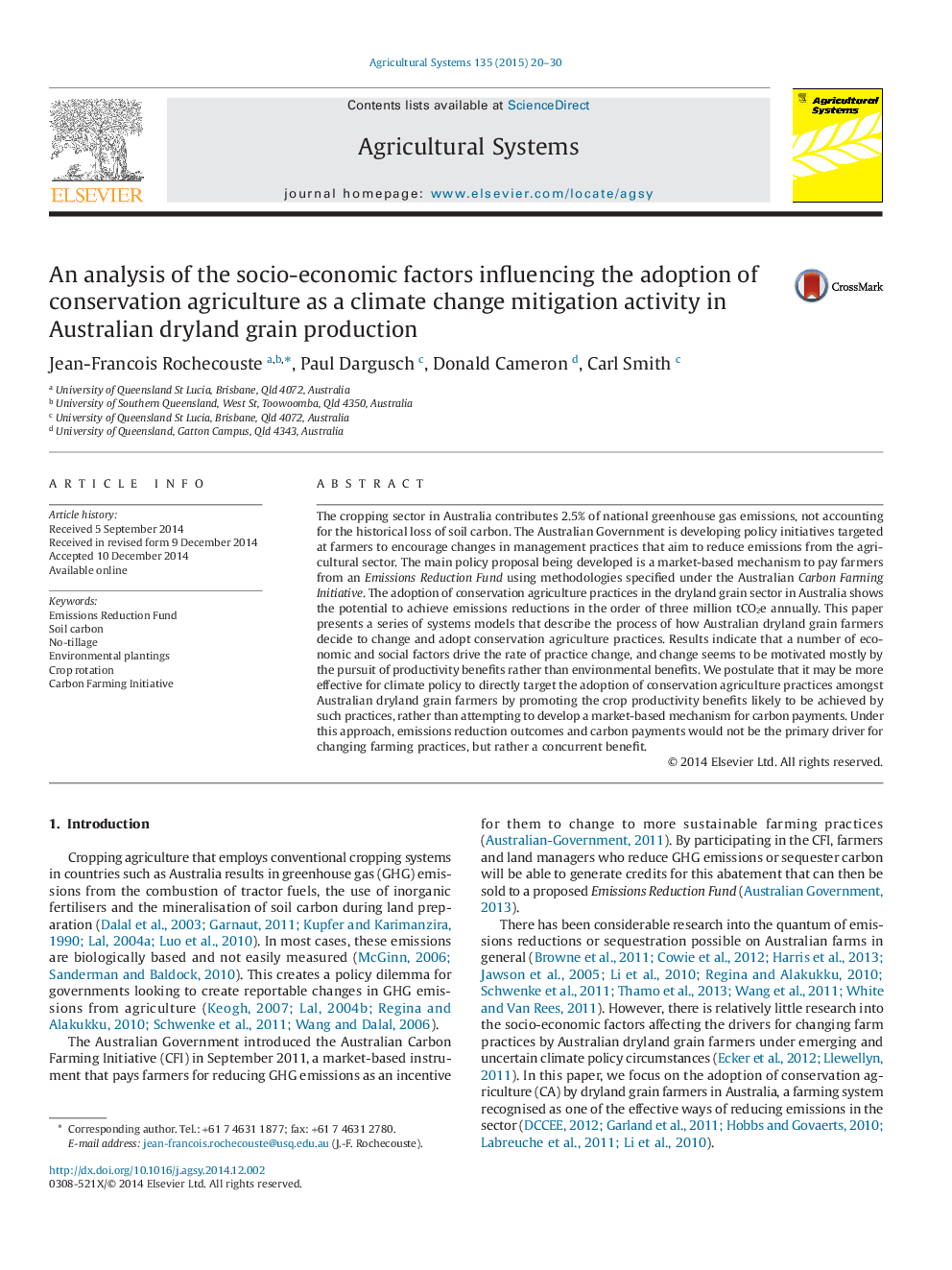| کد مقاله | کد نشریه | سال انتشار | مقاله انگلیسی | نسخه تمام متن |
|---|---|---|---|---|
| 6368511 | 1623235 | 2015 | 11 صفحه PDF | دانلود رایگان |
عنوان انگلیسی مقاله ISI
An analysis of the socio-economic factors influencing the adoption of conservation agriculture as a climate change mitigation activity in Australian dryland grain production
ترجمه فارسی عنوان
تجزیه و تحلیل عوامل اجتماعی-اقتصادی که بر تصویب کشاورزی حفاظت از محیط زیست به عنوان یک اقدام کاهش دهنده تغییرات آب و هوایی در تولید غله های خشک استرالیا
دانلود مقاله + سفارش ترجمه
دانلود مقاله ISI انگلیسی
رایگان برای ایرانیان
کلمات کلیدی
صندوق کاهش هزینه ها، کربن خاک، بدون خاکورزی، کاشت های زیست محیطی، تناوب زراعی، ابتکار کشاورزی کربن،
موضوعات مرتبط
علوم زیستی و بیوفناوری
علوم کشاورزی و بیولوژیک
علوم کشاورزی و بیولوژیک (عمومی)
چکیده انگلیسی
The cropping sector in Australia contributes 2.5% of national greenhouse gas emissions, not accounting for the historical loss of soil carbon. The Australian Government is developing policy initiatives targeted at farmers to encourage changes in management practices that aim to reduce emissions from the agricultural sector. The main policy proposal being developed is a market-based mechanism to pay farmers from an Emissions Reduction Fund using methodologies specified under the Australian Carbon Farming Initiative. The adoption of conservation agriculture practices in the dryland grain sector in Australia shows the potential to achieve emissions reductions in the order of three million tCO2e annually. This paper presents a series of systems models that describe the process of how Australian dryland grain farmers decide to change and adopt conservation agriculture practices. Results indicate that a number of economic and social factors drive the rate of practice change, and change seems to be motivated mostly by the pursuit of productivity benefits rather than environmental benefits. We postulate that it may be more effective for climate policy to directly target the adoption of conservation agriculture practices amongst Australian dryland grain farmers by promoting the crop productivity benefits likely to be achieved by such practices, rather than attempting to develop a market-based mechanism for carbon payments. Under this approach, emissions reduction outcomes and carbon payments would not be the primary driver for changing farming practices, but rather a concurrent benefit.
ناشر
Database: Elsevier - ScienceDirect (ساینس دایرکت)
Journal: Agricultural Systems - Volume 135, May 2015, Pages 20-30
Journal: Agricultural Systems - Volume 135, May 2015, Pages 20-30
نویسندگان
Jean-Francois Rochecouste, Paul Dargusch, Donald Cameron, Carl Smith,
